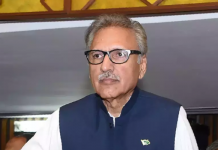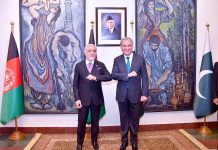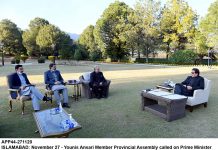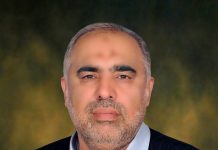ISLAMABAD: NESPAK Pvt Ltd has raised objections over the findings of two-member commission of technic
al experts for re-verification of reports pertaining to impact on heritage sites after the completion of Orange Line Metro Train (OLMT) in Lahore costing Rs 45 billion.
The engine
ering company NESPAK contended that one of the members of commission Professor Robin Cunningham exceeded his domain and prepared the report beyond its scope. NASPAK further contended that professor’s findings focused on the interpretation and the applicability of the two statutes including the Antiquities Act, 1975 and the Punjab Special Premises (Preservation) Ordinance, 1985 despite the fact that he is not a law expert.
On October 14, a five-judge larger bench headed by Chief Justice Anwar Zaheer Jamali, after hearing OLMT case, had constituted two-member commission of technic
al experts comprising M/s TYPSA – Asian Consulting Engineers (Pvt.) Ltd and Professor Robin Coningham, Department of Archaeology, University of Durham, United Kingdom to only re-verify the credibility of the NESPAK Reports
The 11 heritage sites include Supreme Court’s Lahore registry, St Andrew’s Presbyterian Church and Baba Mauj Darya Bukhari’s shrine, Shalimar Garden, Gulabi Bagh Gateway, Buddhu ka Awa, Chauburji, Zebunnisa’s Tomb, Lakshmi Building, General Post Office, Aiwan-i-Auqaf.
Now Advocate Ayesha Hamid, on behalf of NESPAK, filed a civil miscellaneous application (CMA) in the top court asserting objections
and stating that professor’s research is in archeological ethics and practice in cultural heritage and he is neither an expert in civil engine
ering (including structural engineering) nor an expert on law.
“Professor Cunningham self-evidently lacks the requisite expertise to re-verify the credibility of the NESPAK reports in the context of the Antiquities Act 1975 and the Punjab Special Premises (Preservation) Ordinance 1985,” s
tated a 19-page CMA.
It s
tated that structural engine
ering was a field distinct from Archaeology and Anthropology, adding that only a person qualified in the field of structural engine
ering could conduct analysis and design of new structures and evaluate the safety
and stability of existing structures. NESPAK further contended that Professor Cunningham in his findings could not properly comprehend or re-verify the credibility of the NESPAK reports.
“This is also evident from the fact that he failed to discuss the SAP 2000 model, the dynamic analysis, the engine
ering data inputs and the calculation of vibrations on which the NESPAK reports are based,” the CMA stated. It further objected that even before discussing the NESPAK reports, Professor Cunningham conclusively s
tated that OLMT cont
ravenes the Sections 22 and 23 of the Act of 1975 and Sections 11 and 12 of the Ordinance of 1985.
“This was not his mandate. His mandate was the re-verification of the credibility of the NESPAK reports, which he failed to do. The top court did not require his opinion on the interpretation and application of Pakistani laws,” the objections stated. Without examining the NESPAK reports, Professor Cunningham’s findings do not show application of any method and the NESPAK’s reports are rejected without giving any cogent reasons, s
tated the objections.
NESPAK prayed before the top court to take the objections on record of the court and reject the findings of Professor Cunningham.











